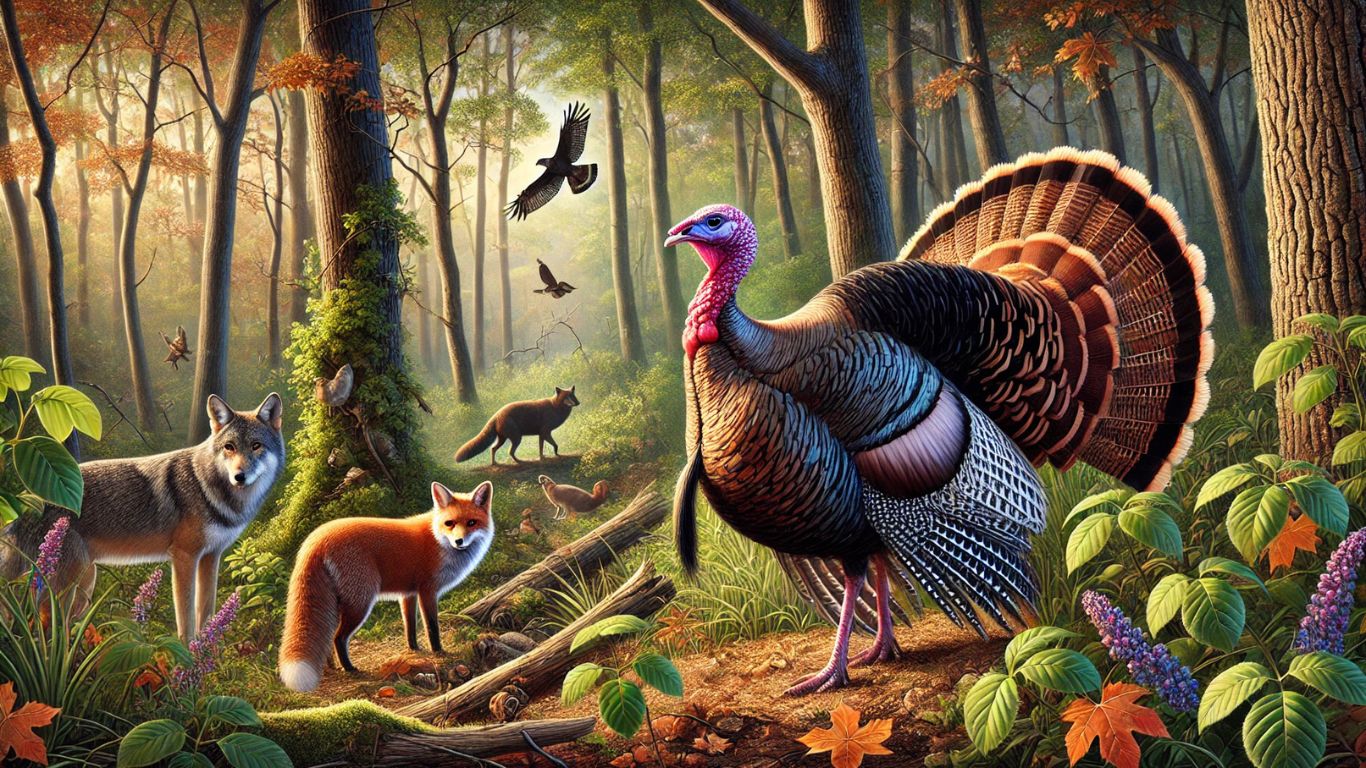What Are Turkeys Enemies? A Deep Dive into Survival

Understanding what are turkeys enemies is essential to appreciating these fascinating birds’ challenges in the wild. Turkeys, whether wild or domesticated, face numerous threats from predators, environmental factors, and human activities. These threats not only test their survival instincts but also highlight their resilience and adaptability. Below, we explore the natural predators, human impacts, and strategies turkeys use to stay alive.
Wild Predators of Turkeys
Wild turkeys face a variety of predators, each posing unique dangers at different stages of their lives. These predators range from mammals to birds and reptiles, making the wild a perilous place for turkeys.
Mammals Threatening Turkeys
Mammals represent a significant portion of what are turkeys enemies. Coyotes, foxes, and bobcats often prey on turkeys, particularly targeting poults (young turkeys) and eggs. These mammals use their stealth and speed to ambush turkeys, especially during nesting season. Raccoons and opossums are known for raiding turkey nests, consuming eggs, and leaving nests devastated. In rural areas, feral dogs may also attack turkeys, especially those that wander close to human settlements.
Avian Predators
Birds of prey such as hawks, eagles, and owls are formidable enemies of turkeys. These raptors have sharp talons and excellent vision, allowing them to swoop down and catch turkeys off guard. Young poults are particularly vulnerable to aerial attacks as they lack the speed and awareness to evade predators. Adult turkeys, while better equipped to defend themselves, are not entirely safe from large birds of prey.
Reptilian Dangers to Turkeys
Although less common, snakes and other reptiles contribute to what are turkeys enemies by targeting eggs and newly hatched poults. Large snakes like rat snakes are adept at climbing trees, giving them access to nests hidden among branches. Snakes often consume eggs whole, which can significantly impact turkey populations in local areas.
The Role of Habitat in Turkey Survival
Habitat plays a crucial role in determining a turkey’s ability to evade predators. Dense forests, open fields, and wetlands each present unique challenges and opportunities for survival.
Forests as a Double-Edged Sword
Forests provide cover and roosting spots for turkeys, but they also house many of their natural predators. Bobcats, for example, thrive in wooded areas where they can stalk turkeys undetected. To mitigate these risks, turkeys rely on their sharp eyesight and swift reflexes to detect danger.
The Challenges of Open Fields
In open fields, turkeys are more exposed to aerial predators such as hawks and eagles. However, these areas also offer turkeys a clear view of approaching threats, giving them a chance to flee. Turkeys often travel in groups, which helps increase vigilance and reduces the risk of individual attacks.
Wetlands and Marshy Areas
Wetlands provide turkeys with food and water but can also harbor threats like snakes and alligators. Navigating these areas requires turkeys to balance their need for resources with the constant threat of predation.
Human Impact on Turkey Populations
Human activities have a profound impact on what are turkeys enemies, both directly and indirectly. Urbanization, hunting, and habitat destruction are among the most significant threats.
Urbanization and Habitat Loss
As cities and towns expand, turkey habitats are often fragmented or destroyed. This forces turkeys into smaller areas where they are more vulnerable to predators and less able to find food. Habitat loss also increases encounters between turkeys and humans, which can lead to accidents or deliberate harm.
The Effects of Hunting
Hunting, though regulated in many regions, remains a considerable threat to turkey populations. While hunting can help control overpopulation in some cases, it also adds to the pressures turkeys face from natural predators. Overhunting can disrupt the balance of local ecosystems, making survival even more challenging for turkeys.
Domesticated Turkeys and Their Enemies
Domesticated turkeys are not immune to threats, even though they are often raised in controlled environments. Predators like foxes, coyotes, and raccoons frequently target backyard flocks, especially if proper fencing is not in place. In addition to predators, diseases and poor living conditions can also jeopardize the health of domesticated turkeys.
Adaptations Turkeys Use to Survive
Despite the many challenges they face, turkeys have developed remarkable adaptations to increase their chances of survival. These include physical attributes, behavioral strategies, and social structures.
Keen Eyesight and Hearing
Turkeys have excellent eyesight, allowing them to spot movement from great distances. Their hearing is also highly developed, helping them detect the sounds of approaching predators. These senses work together to give turkeys an edge in avoiding danger.
Group Behavior
Traveling in groups, known as flocks, provides turkeys with safety in numbers. Members of the flock communicate through various calls and signals, alerting each other to potential threats. This cooperative behavior significantly reduces the likelihood of predator attacks.
Speed and Flight
Although not built for sustained flight, turkeys can fly short distances at high speeds when threatened. They are also capable of running at speeds of up to 20 miles per hour, making them difficult targets for land-based predators.
FAQs
What are the main predators of wild turkeys?
Coyotes, foxes, hawks, and raccoons are the primary predators of wild turkeys. They target eggs, poults, and adult turkeys depending on the predator’s size and hunting strategy.
Do turkeys have natural defenses against predators?
Yes, turkeys rely on keen eyesight, swift reflexes, and the ability to fly short distances to evade predators. They also travel in groups to increase vigilance.
How does habitat destruction affect turkeys?
Habitat destruction reduces the availability of food and shelter for turkeys, making them more vulnerable to predators. Fragmented habitats also lead to increased human-turkey interactions, which can be harmful.
Can domesticated turkeys survive in the wild?
Domesticated turkeys lack many survival skills and are more vulnerable to predators. They are typically bred for size and lack the agility and instincts of their wild counterparts.
Why are turkey eggs targeted by predators?
Turkey eggs are a high-protein food source for many predators, including raccoons, snakes, and opossums. Nests are often hidden but can still be discovered by determined predators.
What measures can help protect turkeys from predators?
Creating secure habitats, using protective fencing for domesticated turkeys, and preserving natural ecosystems can help reduce the threats turkeys face. Responsible hunting practices also play a role in maintaining turkey populations.










